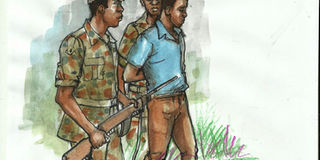What is a forensic postmortem?

The medico-legal postmortem examination, also known as the forensic postmortem or the police postmortem, is a mandatory medical examination of a body following a lawful directive. It is apparently baffling to the lay man that the postmortem examination should be carried out when the cause of death is obvious as in the case of a death due to gunshot injuries or as a result of trauma following a motor-vehicle mishap.
The medico-legal postmortem examination is carried out when death is deemed not to have occurred from natural causes. Such deaths may be homicidal, accidental and suicidal or where the cause of death is not known.
The death of a person not known to have any illness arouses suspicion, especially if such a death occurs suddenly. Many of such deaths may, in truth, be from natural causes. These are technically known as “sudden deaths”.
Homicide
A homicide is a death where one person causes the death of another and these may legally constitute murder or manslaughter.
Deaths that are due to assaults or following violence or from gunshot injuries are homicides and are of interest to the police. Investigation of deaths following suspected poisoning, fires, and all manner of accidents necessitate medico-legal postmortems examinations as part of the investigations. Deaths following man-made and natural disasters are also investigated.
There are special cases where the doctor must perform the postmortem examination carefully and objectively. In the case of a death suspected to have been as a result of a fire, a prudent doctor ought to determine if the death was a result of the fire or the cause of death was different from the fire but disguised by the fire.
Bodies retrieved from water bodies must also be carefully examined as death may not have been as a result of drowning. Water bodies have notoriously been used to conceal homicides.
Deaths that have occurred in hospitals, including deaths from natural causes have sometimes been contested. These occur were medical negligence is suspected to have occurred or is judged to have been a contributing factor.
Some of these cases include deaths that have occurred during or after surgery and maternal deaths. Deaths following adverse drug reactions are also investigated as deaths of medico-legal interest.
Court cases
These cases may end up in the courts of law where evidence of the cause of death is required and such evidence must be beyond reasonable doubt. And courts must take their evidence from the witnesses, including expert witnesses.
At the beginning of a trial it is assumed that the court does not know what happened but will get to know this through time-tested court procedures.
The postmortem examination will prove to court the fact of a death and in most cases the identity of the deceased. It is vital that the prosecution prove beyond reasonable doubt that the accused person caused or participated in causing death. For prosecution to prove this, the accused must be linked to the deceased. One of the key questions a forensic postmortem, therefore, seeks to answer is the identity of the deceased. In most cases this is straight forward, especially if persons who knew the deceased are readily available and the body has not decomposed.
It is for this reason that the management of the body from the place of death to the mortuary must follow a particular chain of custody including formal identification.
Time of death
The estimation of the time the death occurred is often an important legal matter. It can be used to refute an alibi of an accused person. The time of death is determined by the changes that a body undergoes from that time.
Once a person dies, the body begins to lose heat and therefore cools until the temperature of the body matches that of the environment. The temperature of the internal organs can be used to estimate the time when a person died.
Another parameter used to establish the time is the manner and rate of stiffening of the body after death has occurred.
Immediately after death, the body becomes limp and takes a position determined by the forces of gravity. It is at this position that the body then begins to stiffen two or three hours later. The stiffening gradually involves the whole body. However, the stiffening wears off and within 24 hours the body becomes limp again.
Challenges
Challenges in identification of the dead occur in the management of mass disasters or when handling decomposed or burnt bodies and skeletal remains. Identification of such bodies may then involve scientific methods such as identification using fingerprints or DNA.
TO BE CONTINUED




